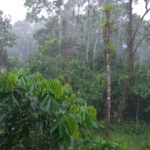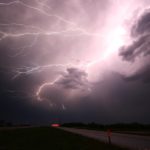7.3: Vocabulario- El clima
- Page ID
- 171471
\( \newcommand{\vecs}[1]{\overset { \scriptstyle \rightharpoonup} {\mathbf{#1}} } \)
\( \newcommand{\vecd}[1]{\overset{-\!-\!\rightharpoonup}{\vphantom{a}\smash {#1}}} \)
\( \newcommand{\dsum}{\displaystyle\sum\limits} \)
\( \newcommand{\dint}{\displaystyle\int\limits} \)
\( \newcommand{\dlim}{\displaystyle\lim\limits} \)
\( \newcommand{\id}{\mathrm{id}}\) \( \newcommand{\Span}{\mathrm{span}}\)
( \newcommand{\kernel}{\mathrm{null}\,}\) \( \newcommand{\range}{\mathrm{range}\,}\)
\( \newcommand{\RealPart}{\mathrm{Re}}\) \( \newcommand{\ImaginaryPart}{\mathrm{Im}}\)
\( \newcommand{\Argument}{\mathrm{Arg}}\) \( \newcommand{\norm}[1]{\| #1 \|}\)
\( \newcommand{\inner}[2]{\langle #1, #2 \rangle}\)
\( \newcommand{\Span}{\mathrm{span}}\)
\( \newcommand{\id}{\mathrm{id}}\)
\( \newcommand{\Span}{\mathrm{span}}\)
\( \newcommand{\kernel}{\mathrm{null}\,}\)
\( \newcommand{\range}{\mathrm{range}\,}\)
\( \newcommand{\RealPart}{\mathrm{Re}}\)
\( \newcommand{\ImaginaryPart}{\mathrm{Im}}\)
\( \newcommand{\Argument}{\mathrm{Arg}}\)
\( \newcommand{\norm}[1]{\| #1 \|}\)
\( \newcommand{\inner}[2]{\langle #1, #2 \rangle}\)
\( \newcommand{\Span}{\mathrm{span}}\) \( \newcommand{\AA}{\unicode[.8,0]{x212B}}\)
\( \newcommand{\vectorA}[1]{\vec{#1}} % arrow\)
\( \newcommand{\vectorAt}[1]{\vec{\text{#1}}} % arrow\)
\( \newcommand{\vectorB}[1]{\overset { \scriptstyle \rightharpoonup} {\mathbf{#1}} } \)
\( \newcommand{\vectorC}[1]{\textbf{#1}} \)
\( \newcommand{\vectorD}[1]{\overrightarrow{#1}} \)
\( \newcommand{\vectorDt}[1]{\overrightarrow{\text{#1}}} \)
\( \newcommand{\vectE}[1]{\overset{-\!-\!\rightharpoonup}{\vphantom{a}\smash{\mathbf {#1}}}} \)
\( \newcommand{\vecs}[1]{\overset { \scriptstyle \rightharpoonup} {\mathbf{#1}} } \)
\( \newcommand{\vecd}[1]{\overset{-\!-\!\rightharpoonup}{\vphantom{a}\smash {#1}}} \)
\(\newcommand{\avec}{\mathbf a}\) \(\newcommand{\bvec}{\mathbf b}\) \(\newcommand{\cvec}{\mathbf c}\) \(\newcommand{\dvec}{\mathbf d}\) \(\newcommand{\dtil}{\widetilde{\mathbf d}}\) \(\newcommand{\evec}{\mathbf e}\) \(\newcommand{\fvec}{\mathbf f}\) \(\newcommand{\nvec}{\mathbf n}\) \(\newcommand{\pvec}{\mathbf p}\) \(\newcommand{\qvec}{\mathbf q}\) \(\newcommand{\svec}{\mathbf s}\) \(\newcommand{\tvec}{\mathbf t}\) \(\newcommand{\uvec}{\mathbf u}\) \(\newcommand{\vvec}{\mathbf v}\) \(\newcommand{\wvec}{\mathbf w}\) \(\newcommand{\xvec}{\mathbf x}\) \(\newcommand{\yvec}{\mathbf y}\) \(\newcommand{\zvec}{\mathbf z}\) \(\newcommand{\rvec}{\mathbf r}\) \(\newcommand{\mvec}{\mathbf m}\) \(\newcommand{\zerovec}{\mathbf 0}\) \(\newcommand{\onevec}{\mathbf 1}\) \(\newcommand{\real}{\mathbb R}\) \(\newcommand{\twovec}[2]{\left[\begin{array}{r}#1 \\ #2 \end{array}\right]}\) \(\newcommand{\ctwovec}[2]{\left[\begin{array}{c}#1 \\ #2 \end{array}\right]}\) \(\newcommand{\threevec}[3]{\left[\begin{array}{r}#1 \\ #2 \\ #3 \end{array}\right]}\) \(\newcommand{\cthreevec}[3]{\left[\begin{array}{c}#1 \\ #2 \\ #3 \end{array}\right]}\) \(\newcommand{\fourvec}[4]{\left[\begin{array}{r}#1 \\ #2 \\ #3 \\ #4 \end{array}\right]}\) \(\newcommand{\cfourvec}[4]{\left[\begin{array}{c}#1 \\ #2 \\ #3 \\ #4 \end{array}\right]}\) \(\newcommand{\fivevec}[5]{\left[\begin{array}{r}#1 \\ #2 \\ #3 \\ #4 \\ #5 \\ \end{array}\right]}\) \(\newcommand{\cfivevec}[5]{\left[\begin{array}{c}#1 \\ #2 \\ #3 \\ #4 \\ #5 \\ \end{array}\right]}\) \(\newcommand{\mattwo}[4]{\left[\begin{array}{rr}#1 \amp #2 \\ #3 \amp #4 \\ \end{array}\right]}\) \(\newcommand{\laspan}[1]{\text{Span}\{#1\}}\) \(\newcommand{\bcal}{\cal B}\) \(\newcommand{\ccal}{\cal C}\) \(\newcommand{\scal}{\cal S}\) \(\newcommand{\wcal}{\cal W}\) \(\newcommand{\ecal}{\cal E}\) \(\newcommand{\coords}[2]{\left\{#1\right\}_{#2}}\) \(\newcommand{\gray}[1]{\color{gray}{#1}}\) \(\newcommand{\lgray}[1]{\color{lightgray}{#1}}\) \(\newcommand{\rank}{\operatorname{rank}}\) \(\newcommand{\row}{\text{Row}}\) \(\newcommand{\col}{\text{Col}}\) \(\renewcommand{\row}{\text{Row}}\) \(\newcommand{\nul}{\text{Nul}}\) \(\newcommand{\var}{\text{Var}}\) \(\newcommand{\corr}{\text{corr}}\) \(\newcommand{\len}[1]{\left|#1\right|}\) \(\newcommand{\bbar}{\overline{\bvec}}\) \(\newcommand{\bhat}{\widehat{\bvec}}\) \(\newcommand{\bperp}{\bvec^\perp}\) \(\newcommand{\xhat}{\widehat{\xvec}}\) \(\newcommand{\vhat}{\widehat{\vvec}}\) \(\newcommand{\uhat}{\widehat{\uvec}}\) \(\newcommand{\what}{\widehat{\wvec}}\) \(\newcommand{\Sighat}{\widehat{\Sigma}}\) \(\newcommand{\lt}{<}\) \(\newcommand{\gt}{>}\) \(\newcommand{\amp}{&}\) \(\definecolor{fillinmathshade}{gray}{0.9}\)Objetivos
- Recognize the vocabulary of weather
Vocabulario: El clima y las estaciones
Weather expressions in Spanish are different from those in English, particularly in the way they are constructed.
A:
¿Qué tiempo hace hoy? (What is the weather like today?)
B: Hoy hace frío y hace viento. (Today it is cold and windy.)
Most weather expressions in Spanish are built with hace, such as:
There are some weather expressions that are different and are not built with hace, such as:
Text only
Most weather expressions in Spanish are built with hace:
- Hace mucho calor. (It’s hot)
- Hace fresco. (It’s cool)
- Hace frío. (It’s cold)
- Hace sol. (It’s sunny)
- Hace buen tiempo. (The weather is good)
- Hace mal tiempo. (The weather is bad)
- Hace viento. (It’s windy)
There are some weather expressions that are different and are not built with hace, such as:
- Hay niebla. (It’s foggy)
- Nieva / está nevando. (It’s snowing)
- Está despejado. (It’s clear)
- Está nublado. (It’s cloudy)
- Está húmedo. (It’s humid)
- Está soleado. (It’s sunny)
- Hay relámpagos. (There is lightning)
- Truena. (There is thunder)
- Llovizna. (It’s raining)
- Llueve mucho (It’s raining a lot)
- Está lloviendo. (It’s raining)
Las estaciones del año (The seasons of the year)
- El verano (summer)
- El otoño (fall)
- El invierno (winter)
- La primavera (spring)
A Practicar
Contributors and Attributions
- Late autumn in Wenquan (20161107144654). Authored by: N509FZ. Provided by: Wikimedia Commons. Located at: https://commons.wikimedia.org/wiki/File:Late_autumn_in_Wenquan_(20161107144654).jpg. License: CC BY-SA: Attribution-ShareAlike
- Snow Invierno Blanco Fru00edo. Authored by: StockSnap. Provided by: Pixabay. Located at: https://pixabay.com/es/photos/snow-invierno-blanco-fr%C3%ADo-clima-2595281/. License: Other. License Terms: Pixabay License
- Sun. Authored by: gr33n3gg. Provided by: Flickr. Located at: https://www.flickr.com/photos/gr33n3gg/3445868159. License: CC BY: Attribution
- Archivo:Lopud_10. Authored by: LBM1948. Provided by: Wikipedia. Located at: https://es.m.Wikipedia.org/wiki/Archivo:Lopud_10.jpg. License: CC BY-SA: Attribution-ShareAlike
- Mal Tiempo Tempestad de Trueno. Authored by: maralb56. Provided by: Pixabay. Located at: https://pixabay.com/es/photos/mal-tiempo-tempestad-de-truenos-2773034/. License: Other. License Terms: Pixabay License
- Costa Turbina De Viento. Authored by: orange31. Provided by: Pixabay. Located at: https://pixabay.com/es/photos/costa-turbina-de-viento-mar-cielo-3970121/. License: Other. License Terms: Pixabay License
- Llueve. Authored by: Maria del Mar. Provided by: Flickr. Located at: https://www.flickr.com/photos/mariauoc/15696770177. License: CC BY: Attribution
- Nubes Cielo Naturaleza. Authored by: Konevi. Provided by: Pixabay. Located at: https://pixabay.com/es/photos/nubes-cielo-naturaleza-aire-nube-3788972/. License: Other. License Terms: Pixabay License
- Rayo Truene. Authored by: WikimediaImages. Provided by: Pixabay. Located at: https://pixabay.com/es/photos/rayo-trueno-tormenta-de-rel%C3%A1mpagos-1056419/. License: Other. License Terms: Pixabay License
- Thunder & Lightning. Authored by: MasterPhoto-DK. Provided by: Flickr. Located at: https://www.flickr.com/photos/euromagic/2804916709. License: CC BY: Attribution
- Drizzles of Anticipation. Authored by: Ahmad Bagadood. Provided by: Flickr. Located at: https://www.flickr.com/photos/tawqee3/450361419/. License: CC BY-SA: Attribution-ShareAlike
- Summer weather can be unpredictable in Alaska. Provided by: US Air Force. Located at: https://www.jber.jb.mil/News/Photos/igphoto/2001074881/. License: Public Domain: No Known Copyright
- Project 365 #141: 210510 u00a1Hay Niebla!. Authored by: Pete. Provided by: Flickr. Located at: https://www.flickr.com/photos/comedynose/4628335377. License: Public Domain: No Known Copyright
- Nevando en el Parque. Authored by: George Hodan. Located at: https://www.publicdomainpictures.net/es/view-image.php?image=34650&picture=nevando-en-el-parque. License: CC0: No Rights Reserved
- Sol de Fondo. Authored by: George Hodan. Located at: https://www.publicdomainpictures.net/es/view-image.php?image=190354&picture=sol-de-fondo. License: CC0: No Rights Reserved
- Archivo:Rain in Tena. Authored by: Lion Hirth. Located at: https://es.m.Wikipedia.org/wiki/Archivo:Rain_in_Tena.jpg. License: Public Domain: No Known Copyright
- Vocabulario: El clima. Authored by: SUNY Oneonta with Lumen Learning. Provided by: SUNY Oneonta. License: CC BY: Attribution
- Weather. Authored by: SUNY Oneonta with Lumen Learning. License: CC BY: Attribution


















